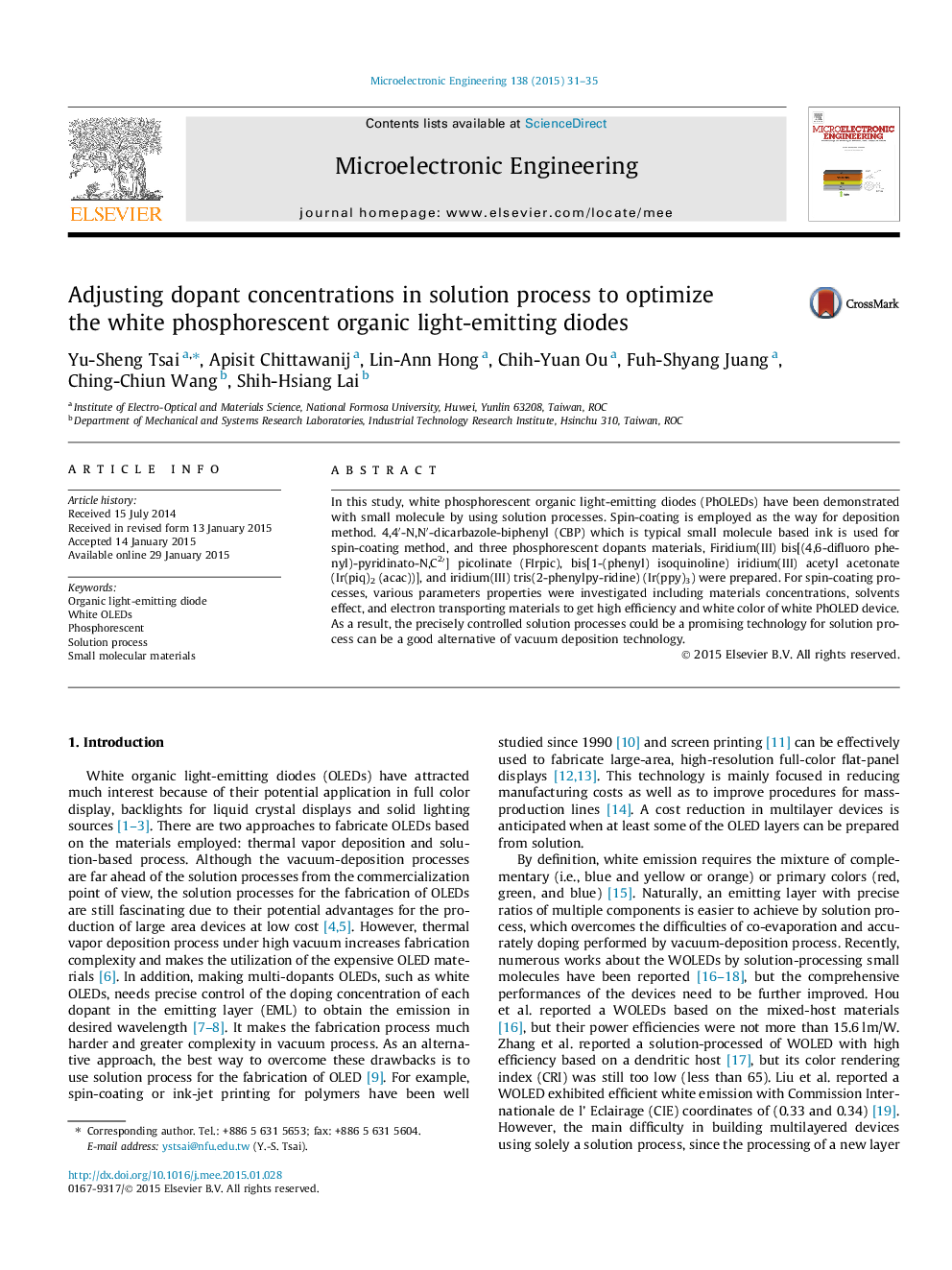| Article ID | Journal | Published Year | Pages | File Type |
|---|---|---|---|---|
| 538956 | Microelectronic Engineering | 2015 | 5 Pages |
•Investigating PhOLEDs with different solvents and dopants concentrations.•High efficiency white PhOLEDs induced by the electron transport/hole blocking material.•To achieve efficient and low-cost small-molecule-based white PhOLEDs.
In this study, white phosphorescent organic light-emitting diodes (PhOLEDs) have been demonstrated with small molecule by using solution processes. Spin-coating is employed as the way for deposition method. 4,4′-N,N′-dicarbazole-biphenyl (CBP) which is typical small molecule based ink is used for spin-coating method, and three phosphorescent dopants materials, Firidium(III) bis[(4,6-difluoro phenyl)-pyridinato-N,C2′] picolinate (FIrpic), bis[1-(phenyl) isoquinoline) iridium(III) acetyl acetonate (Ir(piq)2 (acac))], and iridium(III) tris(2-phenylpy-ridine) (Ir(ppy)3) were prepared. For spin-coating processes, various parameters properties were investigated including materials concentrations, solvents effect, and electron transporting materials to get high efficiency and white color of white PhOLED device. As a result, the precisely controlled solution processes could be a promising technology for solution process can be a good alternative of vacuum deposition technology.
Graphical abstractFigure optionsDownload full-size imageDownload as PowerPoint slide
